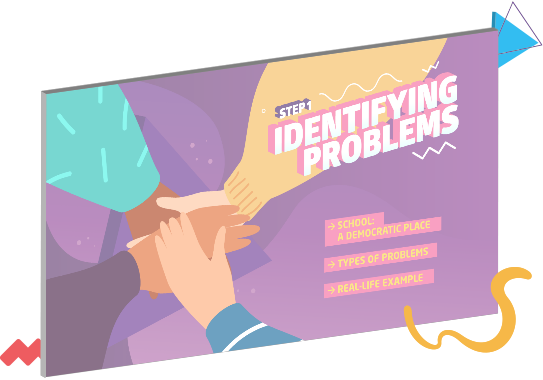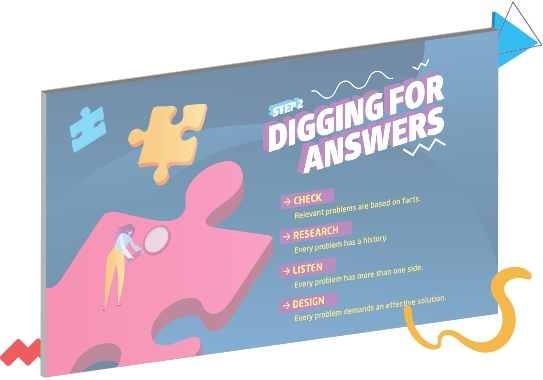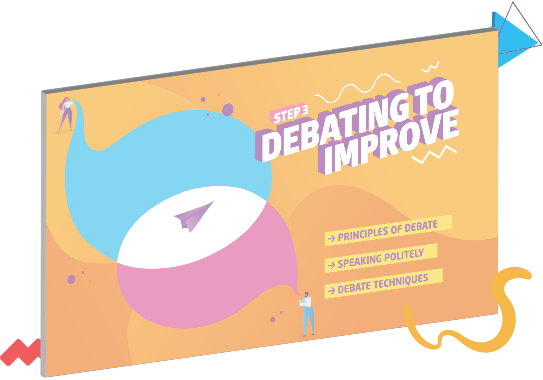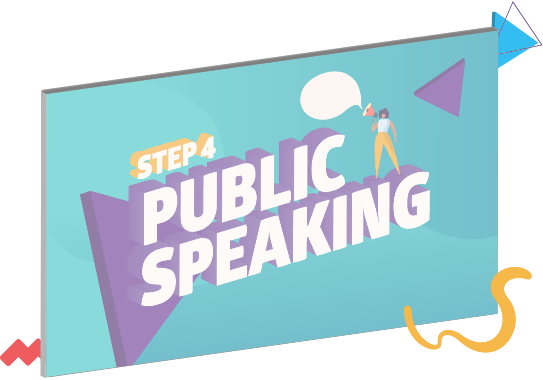☰
 Peace Builders; Taking part
Peace Builders; Taking part
About
How happy are you about your school? Is there anything about it that you would like to be different or better? If the answer is “yes”, the next question is “How can you do it?”. In a school, there is usually a clear hierarchy, and the decisions and changes impact a great number of people. So, it is not possible that each individual tries to solve the problems on their own. Extensive research, talks and discussions are necessary to find a solution that fits all or, at least, the great majority. In this project you will embark on a journey of critical thinking, problem solving and empathy with the mission of improving this place that is so important to the personal and professional development of its members.
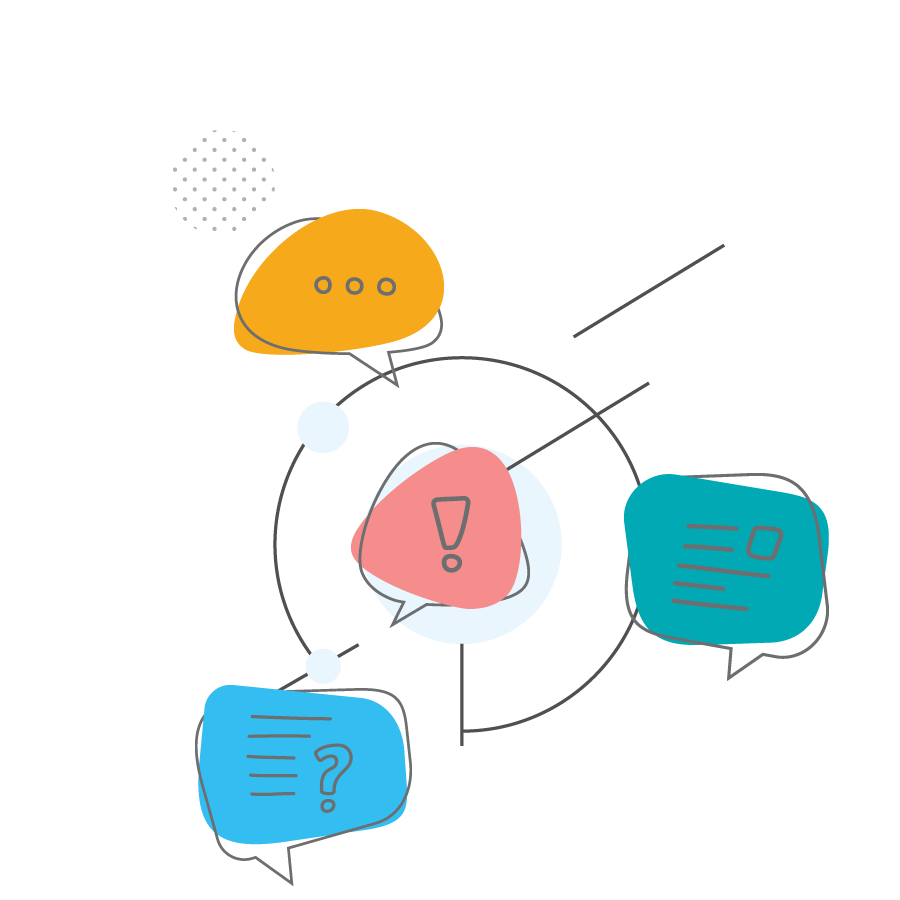
Learning
path
1 path
Identifying problems
Identifying problems
In this step, you are going to form a group to work with on this project and make a list of possible improvements for your school.
Digging for answers
Digging for answers
Now it is time to choose the problem you want to deal with and do an extensive research about it before proposing solutions. You will also learn how to use canvas.
Debating to improve
Debating to improve
Debating is a great tool for refining your project, once you test your arguments and listen to others’ opinions. In this step, you are going to work on strategies to participate in a debate.
Public speaking
Public speaking
Finally, you are going to submit your project for approval. Your group must deliver a written version, but also present it to staff members (principal, coordinator, teachers). So, in this step you will see some tips about public speaking.
STEP 1:
Identifying problems
We live in a political system called democracy. The word comes from the Greek: “demos” (people) and “kratia” (power). The “power of the people” has three very important dimensions: it is about obligations and rights; it is more than the political right to vote, also involving social justice (basic things we need, like health and education for everyone); and, finally, it is about what we need to be happy. When you collaborate as a group to discuss these three dimensions and work together to achieve common goals, you are doing politics in a democratic way. Click on the infographic to learn more.
TASKS:
Form a group to work with on this project and make a list of possible improvements for the school.
SKILLS:
You will work on critical observation in relation to familiar contexts, as if you were seeing them for the first time.
!Sometimes we get used to a situation and we can’t see the problems in it anymore. Developing a critical observation will help you see what can be improved and avoid any problems from becoming bigger in the future.
Glossary
- absence of: ausência de.
- aim: objetivo.
- crew: tripulação; equipe.
- facility: instalação.
- fair (adjective): de maneira justa.
- fair (noun): feira.
- get involved: envolver-se.
- get used to: acostumar-se.
- improvement: melhoria; progresso.
- journey: jornada.
- lack of: ausência de.
- leading role: papel principal.
- quota: cota; parcela.
- raise awareness: conscientizar.
- self-determined: autodeterminado.
- staff: equipe.
- token: lembrança.
- wheelchair: cadeira de rodas.
STEP 2:
Digging for answers
Test your knowledge about the
previous step to move forward.
TAKE THE QUIZ
skip test
previous step to move forward.
What is democracy?
A form of government that allows people to vote, guarantees their rights and demands obligations.
To deal with a problem is…
... to look at a situation that can change for the better and do something about it.
Legally Black is a movement that wants to…
... help people notice that black people are not in the media and understand that it is a problem.
Think about the questions below, then share your experience on Students for PEACE Social Media:
- How often do you discuss your school’s problems? Did you like the experience?
- What aspects could be improved in the school, according to your group?
- What did you think about teenagers creating a campaign that became so popular? Did you feel inspired by it?
Tags: peacebuilders; takingpart; step1
It is extremely important to study the problem you want to deal with before you start thinking about any solutions. Problems are almost never simple: they have a history, they usually have multiple causes and they often affect people in different ways. The more information and facts you gather, the higher your chances to find an effective solution that will make most people happy. Are you not sure how to start? Click on the infographic.
TASKS:
Choose the problem you want to deal with, do some research and work on a canvas.
SKILLS:
You will improve research and design thinking skills.
!These skills are important tools for understanding the nature of problems and creating consistent projects. They will help you analyze the situations from a more complex perspective and avoid simplistic answers.
Glossary
- accurate: exato; preciso.
- canvas: esquema visual para planejamento estratégico.
- data: dados.
- effective: eficaz.
- flat-out: completamente.
- gather: reunir.
- gentrification: gentrificação (processo que envolve a valorização de um lugar revitalizado e afeta a população local de baixa renda).
- special needs: necessidades especiais.
- subjective: subjetivo.
- unaffordable: inacessível; exorbitante.
STEP 3:
Debating to improve
Test your knowledge about the
previous step to move forward.
TAKE THE QUIZ
skip test
previous step to move forward.
What is a fact?
A piece of information that you can check and prove.
What is an opinion?
A point of view based on personal feelings.
Which one is not a function of a canvas?
Tracking the production.
Think about the questions below, then share your experience on Students for PEACE Social Media:
- What did you learn about other schools during your research process?
- If you could go back in time, would you change anything about your research process? If so, what?
- Did you like using the canvas to structure your project?
Tags: peacebuilders; takingpart; step2
Debating can be a great tool for refining the solutions to a problem, but the success of any debate depends on our ability to build an environment where it is totally acceptable and safe to disagree. When we disagree, two things might happen: on the one hand, when we defend our point of view, we usually become more confident about our argument; on the other hand, if the other person shows us sides of the problem that we hadn’t thought about before, we have the chance to change our minds and embrace better ideas. In both cases, we are better at the end of the debate than we were at the beginning. But debating is an art that we need to learn. Click on the infographic to see a few characteristics of a productive discussion.
TASKS:
Promote a debate and adjust the proposal.
SKILLS:
You will work on debating, active listening and empathy.
!Active listening and empathy are here related to a productive discussion, but they are also fundamental in personal and professional relationships; improving your debating skills will help you design solutions to complex problems and to express yourself in a more efficient way.
Glossary
- change your mind: mudar de ideia.
- common ground: interesses comuns.
- embrace: aceitar.
- heated: acalorado/a.
- lead: liderar.
- on the one hand/on the other hand: por um lado/por outro lado.
- rather than: em vez de.
- refine: refinar.
STEP 4:
Public speaking
Test your knowledge about the
previous step to move forward.
TAKE THE QUIZ
skip test
previous step to move forward.
A good starting point for a productive debate is…
... finding something that everyone agrees upon and going from there.
A good debate is about…
... refining ideas.
Choose a technique that can ruin a debate.
To reinforce a point with generalizations.
Think about the questions below, then share your experience on Students for PEACE Social Media:
- What are the pros and cons of having debates in the process of finding solutions to a problem, in your opinion?
- Did you change your mind about anything during the process?
- Were you able to put yourself in other people’s shoes? What did you learn when you did that?
Tags: peacebuilders; takingpart; step3
Your proposal is almost done! Have you already completed and refined the canvas? You can use it as your formal work or write the content as a dissertation to submit it for the staff members’ approval. You and your group must also present the project to them in order to reinforce its importance and consistency. When speaking in public, you (your body, your voice) are your main tool. Click on the video to learn some tips related to presentations.
TASKS:
Deliver the written work and give the presentation to the assigned staff members.
SKILLS:
You will work on the ability of
public speaking.!During your school and professional life, you will need to present your ideas in public in different situations, so it is better to practice it as soon as possible to get used to it.
Glossary
- after a while: depois de um tempo.
- audience: público.
- besides: além de; além disso.
- highlight: destacado/a.
- insecurity: insegurança.
- known as: conhecido como.
- rephrase: reformular.
- speaking of which: falando nisso.
- stare: encarar.
- stylish: elegante.
- summarize: resumir.
- visuals: recursos visuais.
Test your knowledge about
the previous step.
TAKE THE FINAL QUIZ
skip test
the previous step.
Congratulations!
You developed a real project.
Think about the questions below, then share your experience on Students for PEACE Social Media:
- How was the presentation?
- Was your project approved? Did you receive feedback?
- What other tips on being a public speaker can you think of?
Tags: peacebuilders; takingpart; step4
Peace Builders
credits
- Publishing Director: Sandra Possas
- Multiplatform Editorial Manager: Adriana Pedro de Almeida
- Multiplatform Design and Production Coordinator: Raquel Buim
- Content: Bruno Lages
- Multiplatform Content Editor: Ana Paula Campos
- Proofreading Coordinator: Gislaine Caprioli
- Proofreaders: Letícia Della Giacoma de França, Rodney Daniel Cameron, Thais Giammarco
- Multiplatform Designers: Daniela Carrete, Frodo Almeida, Karina Vizeu Winkaler, Mateus Banti
- Multiplatform Photo Researcher: Sara Alencar
- Photos: Layout: UnitoneVector/iStockphoto; Baretsky/iStockphoto; invincible_bulldog/iStockphoto; AlisaRut/iStockphoto; Mykyta Dolmatov/iStockphoto; ma_rish/iStockphoto; Tuncay GÜNDOĞDU/iStockphoto; Joboy O G/iStockphoto; Mykyta Dolmatov/iStockphoto; greyj/iStockphoto; Mack15/iStockphoto; nidwlw/iStockphoto; FingerMedium/iStockphoto; robuart/iStockphoto; grivina/iStockphoto; Lightcome/iStockphoto; giraffarte/iStockphoto; PrettyVectors/iStockphoto; Ekaterina Kapranova/iStockphoto; yokunen/iStockphoto; Ponomariova_Maria/iStockphoto; JuliaTim/iStockphoto; MicrovOne/iStockphoto; Vivali/iStockphoto. Step 1: Wavebreakmedia/iStockphoto; Steve Debenport/iStockphoto; monkeybusinessimages/iStockphoto; Image Source/iStockphoto; Django/iStockphoto; SergeyVButorin/iStockphoto; Legally Black/The Advocacy Academy
- Audio Production: Spectrum Estúdio
- Videos: Step 1: Excerpts from Democratic School Education. Published by Sprouts; Olivia Francis-Cornibert and Shiden Tekle are campaigning positive black images with posters. Published by BhamUrbanNewsUK. Step 2: Excerpts from Distinguishing fact from opinion. Published by Snap Language; The Advocacy Academy. Published by The Advocacy Academy. Step 3: Excerpt from The Importance of Empathy. Published by Lifehacker
- Programming: CPCi Produtora Digital, Daniela Carrete
- Accessibility
- Closed Caption: Ana Paula Campos
- Images Description: Ana Paula Campos
- Every effort has been made to trace the holders of copyright, but if any omissions
can be rectified, the publishers will be pleased to make the necessary arrangements.
- All rights reserved.
- © Editora Moderna
- Richmond
- Editora Moderna Ltda.
- Rua Padre Adelino, 758 — Belenzinho
- São Paulo — SP — Brasil — CEP 03303-904
- Central de atendimento ao usuário: 0800 771 8181
